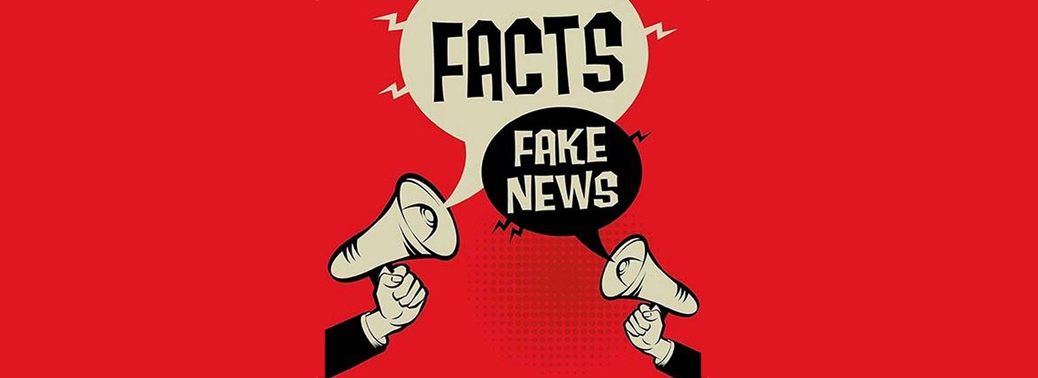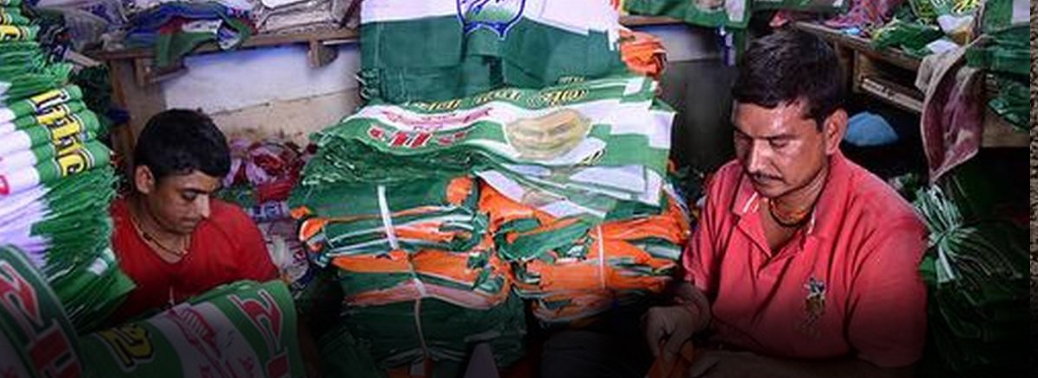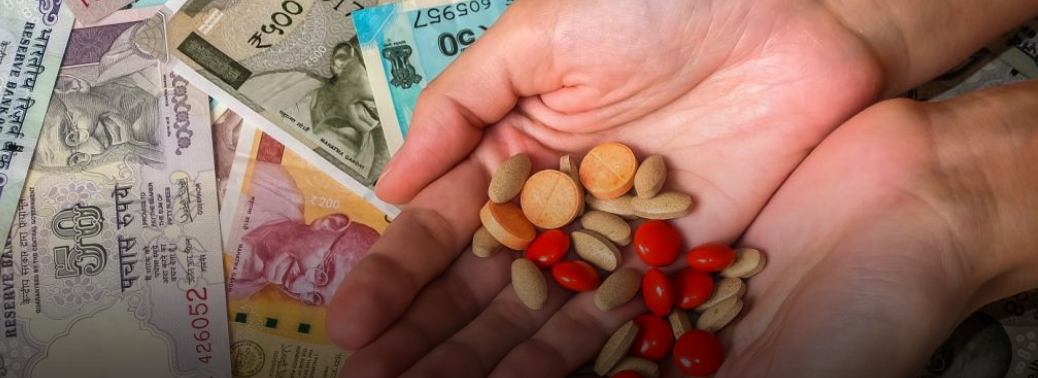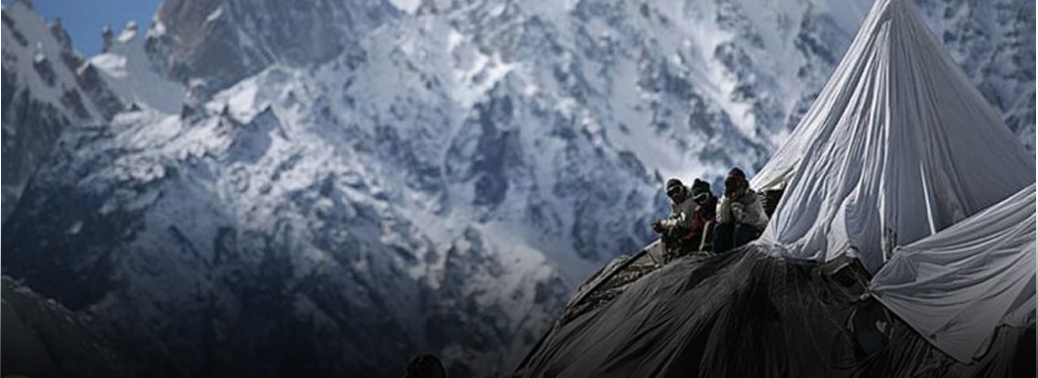Category: Miscellaneous
GLOBAL CAMPAIGN AGAINST FAKE NARRATIVES
07, Sep 2019

Why in News?
- BBC and other leading global news and technology organisations has collaborated to tackle disinformation. The collaboration was announced by the BBC and the partners recently.
- Under this collaboration, news and technology majors will work together to protect their audiences and users from disinformation, particularly around crucial events such as elections.
Trusted News Summit:
- Earlier this year, the BBC convened a ‘Trusted News Summit’, bringing together senior figures from major global technology firms and publishing.
- It was precipitated by events such as the Indian elections, which highlighted the dangers of disinformation and underlined the importance of working together.
- The summit agreed to work collectively on various initiatives, including creating systems where organisations can warn each other quickly when they discover disinformation that threatens human life or disrupts elections.
- The emphasis of the ‘early warning system’ will be on moving quickly and collectively to undermine disinformation before it can take hold.
- The summit also agreed to work towards a joint online media education campaign, and also to co-operate on election-related information such as explaining how and where to vote.
Significance:
- Disinformation and so-called fake news are a threat to us all. At its worst, it can present a serious threat to democracy and even to people’s lives.
- This summit has shown a determination to take collective action to fight this problem and we have agreed some crucial steps towards this.
Legal Framework to Tackle Fake News in India:
- There is no specific law in India to deal with fake news but there are statutory and self-regulatory bodies to act against dissemination of misinformation. Moreover, free publication of news flows from Article 19 of the Constitution guaranteeing freedom of speech.
- Press Council of India: It is a regulatory body which can warn, admonish or censure the newspaper, the news agency, the editor or the journalist or disapprove the conduct of the editor or the journalist if it finds that a newspaper or a news agency has violated journalistic ethics.
- News Broadcasters Association (NBA): represents the private television news and current affairs broadcasters. The self-regulatory body probes complaints against electronic media.
- Indian Broadcast Foundation (IBF): Looks into the complaints against contents aired by channels.
- Broadcasting Content Complaint Council (BCCC): Admits complaints against TV broadcasters for objectionable TV content and fake news.
- Indian Penal Code (IPC): It has certain sections which could curb fake news: Section 153 (wantonly giving provocation with intent to cause riot) and Section 295 (injuring or defiling place of worship with intent to insult the religion of any class) can be invoked to guard against fake news.
- Section 66 in The Information Technology Act, 2000: If any person, dishonestly or fraudulently, does any act referred to in section 43 (damage to computer, computer system), he shall be punishable with imprisonment for a term which may extend to three years or with fine which may extend to five lakh rupees or with both.
- Civil or Criminal Case for Defamation is another resort against fake news for individuals and groups hurt by the fake news.
- IPC Section 499 (defamation) and Section 500 (whoever defames another shall be punished with simple imprisonment for a term which may extend to two years, or with fine, or with both) provide for a defamation suit.
WHAT IS AN INTERPOL RED NOTICE, WHAT DOES IT DO?
03, Sep 2019

Why in News?
- Home Minister of India has conveyed to Interpol Secretary-General Jurgen Stock that India would like the international police agency to expedite its process of publishing Red Notices (RNs). As many as 18 requests for RNs from India are pending with Interpol, including against fugitive jeweller Mehul Choksi and Nirav Modi, a key accused in the Rs 13,500 crore Punjab National Bank scam.
About Red Notices:
- Criminals or suspects often flee to other countries to evade facing justice. An RN alerts police forces across the world about fugitives who are wanted internationally.
- Interpol describes an RN as “a request to law enforcement worldwide to locate and provisionally arrest a person pending extradition, surrender, or similar legal action”.
- RNs contain information that helps identify wanted persons, such as their names, dates of birth, nationality, and physical attributes such as the colour of their hair and eyes, as well as pictures and biometric data such as fingerprints, if they are available. RNs also mention the crime(s) they are wanted for.
- An RN is published by Interpol at the request of a member country. The fugitives may be wanted for prosecution or to serve a sentence. The country issuing the request need not be the home country of the fugitive; Interpol acts on the request of a country where the alleged crime has been committed.
- The Interpol itself does not want individuals; they are wanted by a country or an international tribunal.
- Also, an RN is an international wanted persons’ notice; it is not an international arrest warrant. Which means that the Interpol cannot compel the law enforcement authorities in any country to arrest the subject of an RN. It is up to individual member countries to decide what legal value to give to an RN, and the authority of their national law enforcement officers to make arrests.
- RNs are issued to simultaneously alert police in all member countries about internationally wanted fugitives. An RN can help bring a fugitive to justice, sometimes many years after the crime was committed.
- However, because an RN is not an arrest warrant, action against a fugitive frequently rests on the diplomatic clout that the country making the request has with the country where the fugitive is located. Nations with a big international profile, and economic or political heft, are often more successful than the rest.
Other Types of Notices by The Interpol:
- Blue Notice: To collect additional information about a person’s identity, location or activities in relation to a crime.
- Green Notice: To provide warnings and intelligence about persons who have committed criminal offences and are likely to repeat these crimes in other countries.
- Yellow Notice: To help locate missing persons, often minors, or to help identify persons who are unable to identify themselves.
- Black Notice: To seek information on unidentified bodies.
- Orange Notice: To warn of an event, a person, an object or a process representing a serious and imminent threat to public safety.
- Purple Notice: To seek or provide information on modus operandi, objects, devices and concealment methods used by criminals.
- The INTERPOL-United Nations Security Council Special Notice: Issued for individuals and entities that are subject to sanctions imposed by the United Nations Security Council (UNSC).
DEPOSITS ORDINANCE DOES NOT COVER GOLD SCHEMES
28, Mar 2019

- The Centre’s recent ordinance banning unregulated monthly deposit schemes will not affect the ongoing monthly schemes operated by jewellery and chit fund firms.
- Banning of Unregulated Deposit Scheme Ordinance was promulugated by President Ram Nath Kovind to save gullible investors from losing money to Ponzi and fake deposit schemes. The ordinance makes such unregulated deposit schemes punishable, among other things.
Banning of Unregulated Deposit Scheme Ordinance
Features of the Bill
- The Bill bans Deposit Takers from promoting, operating, issuing advertisements or accepting deposits in any Unregulated Deposit Scheme.
- The Bill ban unregulated deposit-taking activities altogether, by making them an offence. The existing legislative-cum-regulatory framework only comes into effect ex-post with considerable time lags; The Bill creates three different types of offences, namely, running of Unregulated Deposit Schemes, fraudulent default in Regulated Deposit Schemes, and wrongful inducement in relation to Unregulated Deposit Schemes.
- The Bill provides for severe punishment and heavy pecuniary fines to act as a deterrent.
- The Bill provides for repayment of deposits in cases where such schemes nonetheless manage to raise deposits illegally.
- The Bill provides for attachment of properties/assets by the Competent Authority, and subsequent realization of assets for repayment to depositors.
- Timelines have been provided for attachment of property and restitution to depositors.
- The Bill enables the creation of an online central database, for collection and sharing of information on deposit-taking activities in the country;
- The Bill also defines “Deposit Taker” and “Deposit” comprehensively.
Definition of “Deposit Taker” and “Deposit” under the Bill
- Deposit Takers include all possible entities (including individuals) receiving or soliciting deposits, except specific entities such as those incorporated by legislation; Deposit is defined in such a manner that deposit-takers are restricted from camouflaging public deposits as receipts, and at the same time, not to curb or hinder acceptance of money by an establishment in the ordinary course of its business.
Ponzi scheme
- A Ponzi scheme is an investment fraud where clients are promised a large profit in short term at little or no risk at all.
- Companies engaged in a Ponzi schemes mainly focus all of their energies into attracting new clients to make investments.
- This new investments (income) are used to pay original investors their returns, marked as a profit from a legitimate transaction.
- Ponzi schemes mainly rely on a constant flow of new investments to provide returns to older investors. When this flow runs out, the scheme falls apart.
LIQUOR, CASH, FREEBIES SWING VOTES: ADR SURVEY
26, Mar 2019

- A nationwide survey involving more than 2.7 lakh people revealed that for 41.34% respondents, distribution of liquor, cash and freebies was an important factor behind voting a particular candidate in an election, according to the Association for Democratic Reforms.
- This is the third all-India survey commissioned by the ADR. A total of 2,73,487 people across 534 Lok Sabha constituencies participated in it.
- Though 97.86% interviewees felt that candidates with criminal background should not be in Parliament or State Assembly, 35.89% were willing to vote for a candidate with criminal records if the candidate had done good work in the past.
- The survey has indicated that better employment opportunities and healthcare remain among the top priorities of voters. The respondents rated the government’s performance on 31 listed issues as below average.
Support for Public Needs:
- On a scale of one to five, the respondents gave an average of 2.58 for better public transport, followed by 2.53 on the issue of electricity for domestic use and 2.52 for drinking water. The government’s performance on initiatives against river and lake water pollution was rated as 2.51; 2.48 for empowerment of women and security; just 1.37 on eradication of corruption; and 1.15 on the issue of terrorism.
- As regards better employment opportunities, the interviewees gave a rating of 2.15; and on better health care, it was 2.35. They rated the government’s performance as 2.18 for availability of water for agriculture; 2.15 for agri-loan availability; and 2.23 for higher price realisation for farm products.
- All throughout the survey better employment opportunities and better healthcare remain amongst the topmost voters’ priorities. Also, these two voters’ priorities have continued to remain at the top at all India level since 2017.
As per the survey,
- Better employment opportunities (46.80%),
- Better healthcare (34.60%) and
- Drinking water (30.50%) were the top three priorities,
Followed by
- Better roads (28.34%) and
- Better public transport (27.35%).
- In India, the culture of promising freebies in election manifesto has been spreading extensively. The ethicality and legality of such promises has been the subject of debate for a while now. This issue was brought to the forefront when the issue was tackled by the Supreme Court.
S.Subramaniam Balaji v. Government of Tamil Nadu
- In the above case, the Court delved into the legality of promising freebies in election manifestos. The Court opined that freebies shook the ‘root of free and fair elections to a large degree.’
- However, the distribution of colour TVs, laptops, mixer-grinders etc. by the government in accordance with the laws currently prevalent in the country cannot be ruled as being against ‘public purpose’.
- The Supreme Court ruled that promises made in an election manifesto cannot be construed as a ‘corrupt practice’ under section 123 of the Representation of the People Act, 1951. And since no legislation governs election manifestos, it directed the EC to frame appropriate guidelines.
NPPA ON ANTI-CANCER DRUGS
08, Mar 2019

The government announced a massive reduction in the prices of anti-cancer drugs and put out a list of 390 drugs that will get price slash.
About:
- The National Pharmaceutical Pricing Authority has put out the list of 390 anti-cancer non-scheduled medicines with MRP reduction up to 87 per cent. The revised prices came into effect from immediately.
- On February 27, the authority had put 42 anti-cancer drugs under “30 per cent trade margin” cap to enable price reduction.
- Manufacturers and hospitals were directed to convey the revised MRP on the listed drugs, based on the revised trade margin formula.
- As many as 390 brands, 91 per cent of the 426 anti-cancer brands reported by manufacturers, showed downward price movement after the February 27 move.
- The range of reduction is 75% and more for 38 brands; 50 to 75% for 124 drugs; 25 to 50% for 121 drugs; below 25% for 107 drugs.
- The manufacturers of these 42 drugs have been directed not to reduce production volume of brands under regulation.
- The trade margin rationalization for 42 anti-cancer drugs was rolled out as proof of concept stressing on the new paradigm of self-regulation by the industry.
- The government’s move, however, is unlikely to affect pharma companies. The new notified formula for fixing the maximum retail price (MRP) of 42 cancer drugs is based on the price at the first point of sale of the product or price to stockists.
- The average ‘out-of-pocket’ expenditure for cancer patients is 2.5 times that for other diseases. This move is expected to benefit 22 lakh cancer patients in the country and result in annual savings of Rs 800 crore to consumers.
NPPA:
- The National Pharmaceutical Pricing Authority (NPPA) is a government regulatory agency that controls the prices of pharmaceutical drugs in India.It comes under Department of Pharmaceuticals, Ministry of Chemicals and Fertilizers.
- The NPPA regularly publishes lists of medicines and their maximum ceiling prices.
Functions: - To implement and enforce the provisions of the Drugs (Prices Control) Order in accordance with the powers delegated to it.
- To deal with all legal matters arising out of the decisions of the Authority.
- To monitor the availability of drugs, identify shortages, if any, and to take remedial steps.
- To collect/ maintain data on production, exports and imports, market share of individual companies, profitability of companies etc, for bulk drugs and formulations.
- To undertake and/ or sponsor relevant studies in respect of pricing of drugs/ pharmaceuticals.
- To recruit/ appoint the officers and other staff members of the Authority, as per rules and procedures laid down by the Government.
- To render advice to the Central Government on changes/ revisions in the drug policy.
- To render assistance to the Central Government in the parliamentary matters relating to the drug pricing.
MAJOR REFORMS FOR INDIAN ARMY
06, Mar 2019

About:
- Defense ministry has approved the first batch of reforms in the Army which include relocation of 229 officers from the Army headquarters, creation of a new post of deputy chief for military operations and strategic planning, and setting up new wings for vigilance and human rights issues.
- Finalized after 12 independent studies, the transformative reforms in the Army are being implemented to make the 1.3 million-strong force leaner and meaner as well as to enhance its combat capabilities. The number of officers being moved out is 20 per cent of the total officers in the Army headquarters in the national capital, and they be deployed in forward locations along the borders with China and Pakistan.
- The post of Deputy Chief of the Army Staff Strategy DCOAS (Strategy) is being created to deal with military operations, military intelligence, strategic planning and operational logistics.
- At present, the DG (Military Operations) and the DG (Military Intelligence) report to the Army Chief.
- The defense minister also approved creation of a new information warfare wing in keeping the needs of the future battlefield, hybrid warfare and social media reality.Government has approved merging of the separate verticals of the DCOAS (planning and strategy) and the Master General Ordnance (MGO) into one office of the DCOAS (Capability Development and Sustenance).
- Government has also approved creation of two new branches to deal with vigilance and human rights issues, reflecting the Army’s commitment to probity and transparency. Both the branches will be headed by Major General rank officers.
- The new ADG, Vigilance will function directly under the Chief of Army Staff and the new ADG Human Rights will function under the VCOAS. the ADG (Vigilance) will also have a new Vigilance Investigation Unit under him.
- The reforms will also include restructuring the Army’s officer cadre, bringing down age of key commands, arresting rising revenue expenditure and “right-sizing” the force.
- This move would synergise and coalesce all revenue and capital spending under one organisation and effectively prioritise competing requirements with an operational focus to get better value for funds allocated by the government.
- The reform measures will be implemented with a sense of urgency.
Background:
- The Army headquarters had instituted four studies with an overall aim to enhance the operational and functional efficiency of the force, optimize budget expenditure, facilitate modernization and address aspirations. The first study on ‘re-organisation and right-sizing of the Indian Army’ was focused on the operational structures to make the force efficient and future-ready by taking into account the operational situation on western and northern borders.
- The second study was on ‘re-organisation of the Army headquarters with an aim to bring in “integration and preclude the redundancies”.
- The third study was on ‘cadre review of officers’ and its focus was to recommend how to carry out reorganisation and restructuring to meet the aspirations of the officers’ cadre.
- The fourth study on ‘review of terms of engagement of rank and file’ was aimed at harnessing the higher life expectancy and ensuring younger profile of key commands and motivation of the personnel.
HALT THE HATE- REPORT
06, Mar 2019

- Amnesty India releases ‘Halt the Hate’ report which records the data on reported hate crimes against people from marginalised communities, which includes Dalits and Adivasis, members of racial or religious minority groups, transgender persons and migrants.
About:
- The ‘Halt the Hate’ website documents alleged hate crimes against people from marginalized communities, including Dalits, Adivasis, members of racial or religious minority groups, transgender persons, and migrants. The website documents alleged hate crimes from September 2015, when Mohammad Akhlaq was killed in Dadri, Uttar Pradesh, for allegedly killing a cow. It uses English and Hindi language media to collect a record of these reported incidents. Since September 2015, there have been 721 incidents of alleged hate crimes, a vast majority of which have been against Dalits and Muslims.
Findings:
- In 2018, the website documented a total of 218 incidents of alleged hate crimes. 142 of these were against Dalits, 50 against Muslims, and 8 each against Christians, Adivasis, and Transgender people.
- There were 97 incidents of assault and 87 killings reported. 40 incidents were reported where women from marginalized groups or transgender persons faced sexual violence. Dalit women, in particular, faced a disproportionate amount of sexual violence, facing 33 out of 40 incidents of sexual violence.
- Cow-related violence and so-called ‘honour’ killings were among the common instances of alleged hate crimes. Of all the states and union territories where hate crime incidents were tracked, the top five states are Uttar Pradesh (57), Gujarat (22), Rajasthan (18), Tamil Nadu (16) and Bihar (14). For the third straight year, Uttar Pradesh is reported to have the highest number of hate crimes, with 50 incidents in 2017 and 60 incidents in 2016.
Way Forward:
- The data on the website is only a snapshot of alleged hate crimes in India, and is not comprehensive by any means.
- Many incidents are not reported to the police, and even when they are, many do not make it to mainstream media. While criminal investigations have been initiated in some cases, several have gone unpunished.
- Authorities need to do much more to ensure justice for victims and their families.
NITI AAYOG TO DRAW UP LIST OF NON-CORE ASSETS OF CPSES FOR MONETISATION
05, Mar 2019

In News:
The NITI Aayog has been tasked with drawing up a list of non-core assets of various CPSEs, both healthy and sick ones, as a first step towards Finance Ministry’s plan to monetise such assets and unlock value to shareholders.
Explained:
- In 2016, NITI was asked to draw up a list of CPSEs which could go in for strategic sale. It had identified about 35 CPSEs which could go in for outright sale.
- This is part of the overall plans of the government to lay down a procedure and mechanism for monetisation of non-core assets of central public sector undertakings (CPSEs), that include mainly land and building.
- NITI Aayog will draw up the list of non-core assets owned by CPSEs, which can be sold separately after discussion with a consultative group comprising officials from administrative ministries, Department of Economic Affairs, Department of Investment and Public Asset Management (DIPAM).
- The nine CPSEs whose non-core assets have been identified for hiving off are Pawan Hans, Scooters India, Air India, Bharat Pumps & Compressors, Project & Development India Ltd (PDIL), Hindustan Prefab, Hindustan Newsprint, Bridge and Roof Co and Hindustan Fluorocarbons. In the current financial year, the government has set a disinvestment target of Rs 80,000 crore, which includes strategic and minority stake sale in CPSEs. The government already had already given in-principle approval for strategic sale of 24 state-owned companies.
- So far, this fiscal, the government has raised over Rs 56,064 crore by divesting stakes in state-owned companies.
NITI AAYOG:
- The National Institution for Transforming India, also called NITI Aayog, was formed via a resolution of the Union Cabinet on January 1, 2015. NITI Aayog is the premier policy ‘Think Tank’ of the Government of India, providing both directional and policy inputs.
- While designing strategic and long-term policies and programmes for the Government of India, NITI Aayog also provides relevant technical advice to the Centre and States.
- The Government of India, in keeping with its reform agenda, constituted the NITI Aayog to replace the Planning Commission instituted in 1950. This was done in order to better serve the needs and aspirations of the people of India. An important evolutionary change from the past, NITI Aayog acts as the quintessential platform of the Government of India to bring States to act together in national interest, and thereby fosters Cooperative Federalism. At the core of NITI Aayog’s creation are two hubs – Team India Hub and the Knowledge and Innovation Hub. The Team India Hub leads the engagement of states with the Central government, while the Knowledge and Innovation Hub builds NITI’s think-tank capabilities. These hubs reflect the two key tasks of the Aayog.
- NITI Aayog is also developing itself as a State-of-the-Art Resource Centre, with the necessary resources, knowledge and skills, that will enable it to act with speed, promote research and innovation, provide strategic policy vision for the government, and deal with contingent issues.






